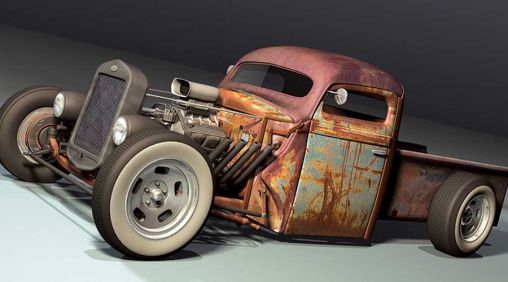Rat Rod Authority’s Tip of the Week – Metal Work
Posted by admin at 27 December 2014, at 13 : 50 PM

What really makes a true Rat Rodder is the way you present your car. Paint has something to do with it and so do wheels and tires, but what will really set you apart from other Rat Rods is how the metal work has been completed.
Now what exactly is metal work you ask? It is the art of smoothing out any dents, cutting out any rust and replacing it with new metal and custom fabrication and modification of the body itself. Metal work takes years to perfect, but any novice can get started on their Rat Rod today by adhering to a couple of simple rules.
Try not to stretch the metal, unless you know how to and can shrink it back to normal. By hammering on a fender or a door, you can reverse a dent, but over hammer a panel and you will stretch it. What we mean by stretched is that the metal has been reshaped too much and now is not flat with the body. And when you go to hammer it back into place, you have developed what many call an “oil can.” This phrase taken from an old style oil can. The kind that has a long tip and short base in which you push on the back to squirt the oil and the metal bends back and forth. The same applies to the body of your Rat Rod.
What to do in this situation? Heat can be your enemy, but in this case, it will be your friend. Take a small torch and get the panel of your Rat Rod hot, have a bucket of water and rag ready to quickly cool the area. The premise here is to heat the metal and quickly super shrink it with cold water to reverse the stretching. Do this in moderation and you will find that the process is actually very effective.
When recessing or “frenching” antennas or lights, take your time here to get the metal work as close as possible. You don’t want to end up with a Rat Rod that’s loaded with bondo. Use black pipe as your base to mount the antenna. It will make your life very easy to finish it off.
When doing rust repair, if you want to, cut out all affected areas about 2 inches past the last part of rust in order to completely get past the rusted areas. Weld in the new metal, taking time to ensure a tight fit.
